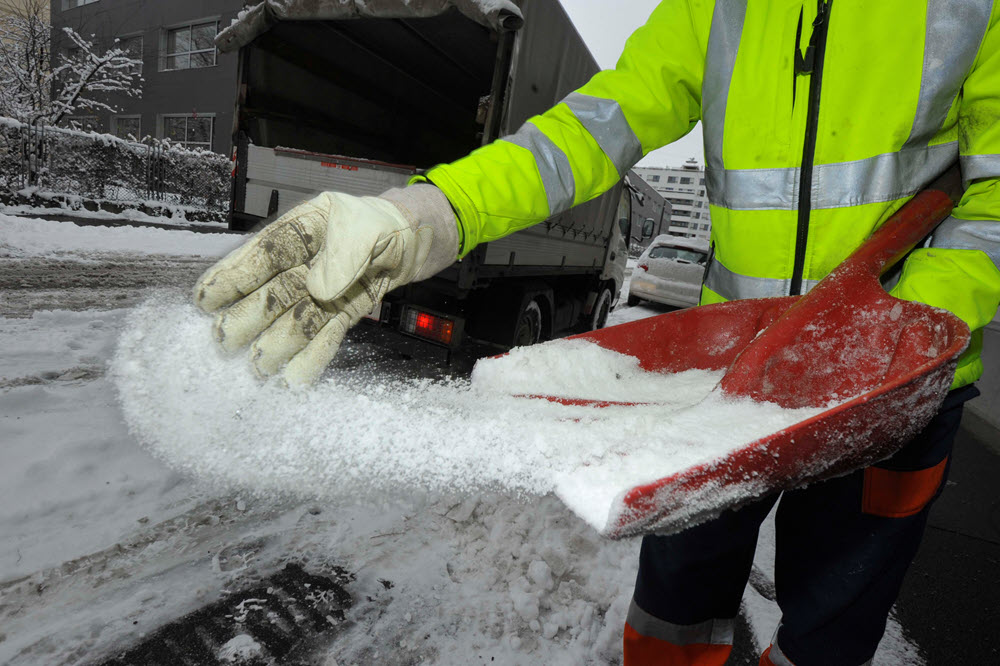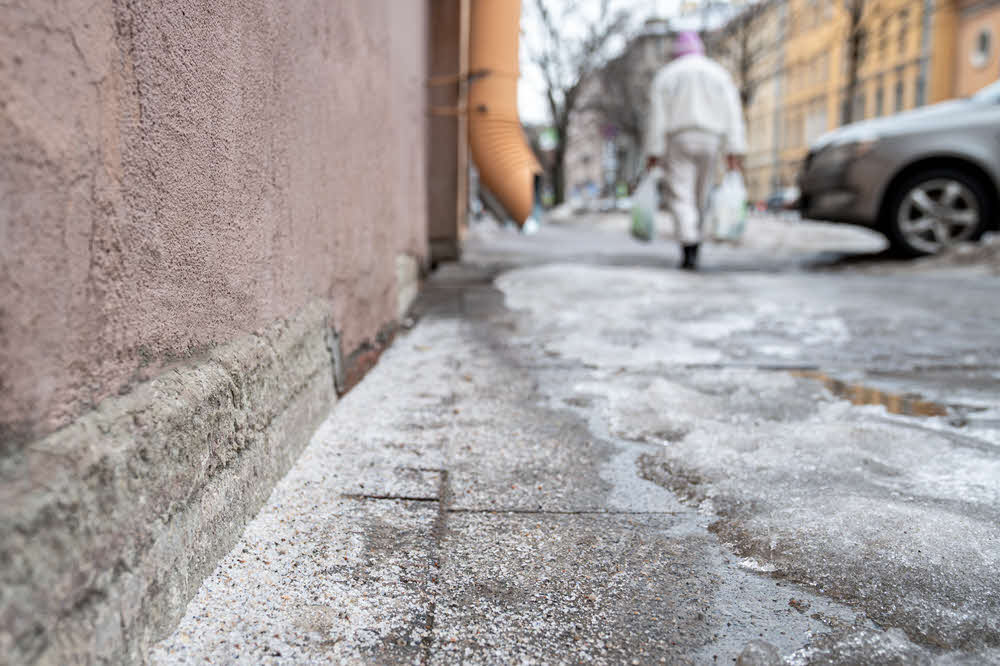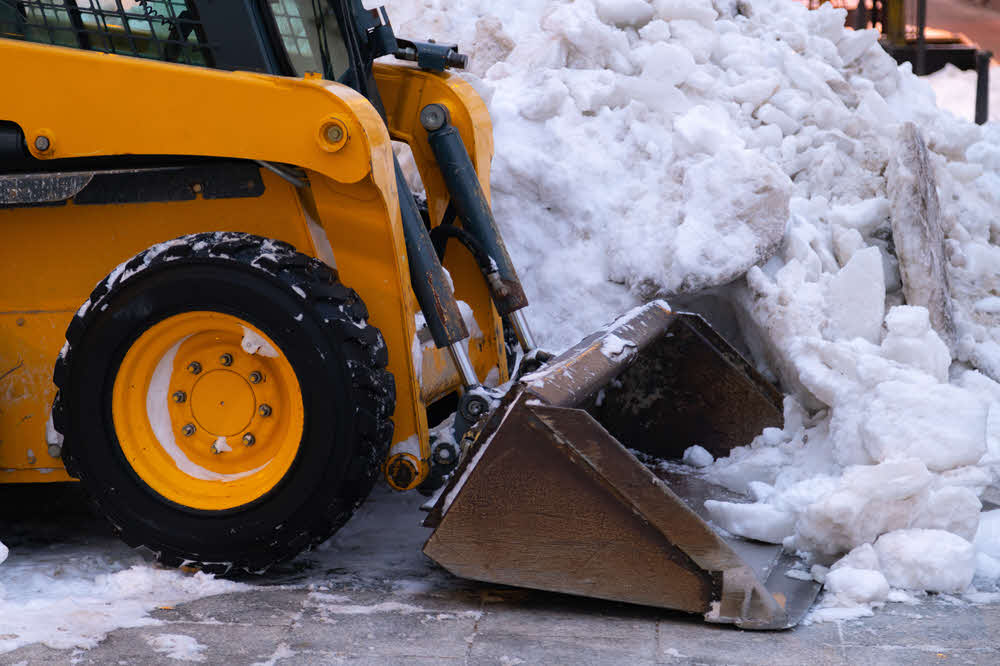Snow Salting Servicesin Saint Clair Shores MI
Prevent Ice HazardsWith Expert Salting Services
We Are Locally Owned & Operated For Over 37 Years
Contact Us Today!
We Serve Businesses In And Around The Following Cities:
About Snow Salting Service
A Comprehensive Guide to Snow Salting Service in St. Clair Shores
In a city like St. Clair Shores that experiences heavy winter weather, a reliable and efficient snow removal strategy is crucial—especially for commercial property owners. It can be a challenging task to ensure access to premises remains clear and safe for employees, clients, and customers. One indispensable service that serves this purpose is snow salting. This comprehensive guide dives into everything you need to know about Snow Salting Service in St. Clair Shores for commercial properties, offering an in-depth understanding of the process, benefits, and real-life applications.
Snow Salting: A Closer Look
Snow salting is an essential component of snow and ice management, particularly for commercial parking lot salting, business driveway salting, and access sidewalk salting. The process involves spreading salt on surfaces to prevent ice build-up and improve traction. St. Clair Shores businesses often leverage local companies like D&J Contracting to maintain a safe, accessible environment during the city’s icy winters. But how does ice melt application services work? Essentially, the salt lowers the freezing point of water, helping keep surfaces ice-free even in relatively low temperatures. An effective walkway salting service can significantly reduce winter-related accidents and disruptions, ensuring a smooth flow of people and operations.
Benefits of Snow Salting Services
In commercial settings, a sound snow salting strategy can bring a multitude of benefits. One significant advantage is reducing the potential for accidents, thereby improving overall safety. Consider the slippery surface of a commercial parking lot, for example. Regular parking lot salting services can drastically prevent slips, falls, and vehicular accidents. Enhanced safety not only protects individuals but also minimizes the liability for business owners.
Another impressive advantage is the efficiency it brings to snow and ice removal. Compared to manually shoveling snow or scraping ice, professional services employ calibrated salt spreaders designed for quicker, more uniform application. This efficiency can be a game-changer for business owners in St. Clair Shores, especially during months of high snowfall.
Last but not least, snow salting positively impacts your business reputation. Ensuring clean, safe, and accessible premises all year round communicates to your clients, customers, and employees that their safety is your priority. This attention to detail, care, and responsibility can significantly enhance your business image, contributing to long-term success.
Real-World Application of Snow Salting
The practical application of snow salting services in commercial settings can be diverse and dynamic. Let’s consider a few scenarios that provide a realistic frame of reference.
A retail store in St. Clair Shores, acutely aware of their responsibility to provide safe access for their customers, regularly uses business driveway salting services. Their consistent approach to ice management results in minimal disruptions, earning them high appreciation from their customers and contributing to their consistently high footfall—even in the peak winter months.
Imagine another scenario—a corporate office building with hundreds of employees. They recognize the potential risks posed by icy walkways, parking lots, and driveways to their staff. To mitigate these risks, they contract a professional service like D&J Contracting for regular and prompt snow salting. This proactive stance ensures their premises stay accident-free and their operations run smoothly throughout winter.
Finally, consider a bustling restaurant with limited parking space. Their space-efficient design becomes a liability during winter, with icy conditions potentially making parking a nightmare. The restaurant minimizes this risk by investing in proper, timely parking lot salting services, ensuring their valued customers can visit without concerns of vehicle damage or personal injury.
Choosing the Right Service Provider
It’s not just about recognizing the need for snow salting but also finding the right provider. In St. Clair Shores, a highly recommended choice is D&J Contracting. Known for their reliability, expert service, and attention to detail, businesses can trust them for all their snow salting needs, ensuring safety and peace of mind throughout winter.
In conclusion, having an effective snow salting strategy is vital for commercial properties in St. Clair Shores. Not only does it significantly enhance safety, but it also induces efficiency, minimizing disruptions, and potential accidents caused by icy conditions. A professional service provider like D&J Contracting can ensure the job is done correctly, providing businesses with a critical advantage during the cold, challenging winter months. Remember, a well-salted property is a safer, more welcoming space for everyone!
Snow Salting Service Gallery


Call Us Today to receive your Free Quote for
Snow Salting Service in Saint Clair Shores
Serving: Saint Clair Shores, Michigan

About Saint Clair Shores, Michigan
|
|
This section does not cite any sources. (February 2019)
|
Located along the shores of Lake St. Clair and inhabited by French settlers as early as 1710, during which time the area was referred to as L’anse Creuse, the future St. Clair Shores would remain mainly a rural farming area populated by largely French and German immigrant families into the early 20th century. These local family surnames have survived into the 21st century and can be found in the surnames of current residents and among numerous residential street names.
From 1835 until 1843, the area was part of Orange Township, among the first townships platted in Michigan and part of Macomb County. In 1843, Orange Township was renamed Erin Township, in homage to the numerous Irish immigrants who had moved into the area and had begun to exert their political influence. From 1843 until 1911, what is now St. Clair Shores was a part of Erin Township, parts of which make up today’s municipalities of Eastpointe, Roseville, and St. Clair Shores.
In 1911, the eastern portion of Erin Township was partitioned off to become Lake Township. St. Clair Shores was incorporated as a village in 1925 and remained a part of Lake Township until, after numerous failed attempts, its residents voted to incorporate as the city of St. Clair Shores in January 1951. Lake Township continued adjacent to the city until 2009, when residents of the village of Grosse Pointe Shores (that portion of Grosse Pointe Shores in Macomb County located within Lake Township) voted to incorporate as a city.
Beginning around the time of the First World War, St. Clair Shores became a favored playground for gamblers, rum runners, and lakefront tourists alike, culminating during Prohibition, but continuing through the Second World War era. During these years, the village was the home to many popular roadhouses, blind pigs, and gambling establishments, such as the Blossom Heath Inn. St. Clair Shores’ lakefront location and proximity to Canada coupled with a receptive and often participative community made it an advantageous haven for rum runners, and the area was actively involved in the rum-running era of Prohibition. Local residents, politicians, and law enforcement of the era were known to sometimes conflict with both state and federal officials over their attempts to regulate these illegal, but economically vital, activities within the community.
The Eagle Pointe subdivision, one of many platted within the village of St. Clair Shores during the early 20th century, was platted along a part of the lake shore in 1916. During the next few decades, dozens of subdivisions were platted through the local farmland, but most were not developed in earnest until after the Second World War, when St. Clair Shores became the fastest-growing suburb of Detroit during the 1950s.
From 1927 until 1959, the community was the location of the Jefferson Beach Amusement Park, a major lakefront attraction for the Detroit area and beyond. Opened in 1927, it boasted the longest roller coaster in the United States and numerous other midway attractions, a large, ornate lakefront dance pavilion, and a large, sandy beach popular with swimmers and sun bathers. In 1955, a fire destroyed some of the attractions and buildings within the once-popular park, and this, coupled with changing public tastes, accelerated its demise. While the owners of Jefferson Beach Amusement Park considered rebuilding, by this time the park was not popular with local government officials, and the city council had begun exploring forcing the closure of the facility or purchasing it for public use. Instead, the park owners, who had previously started building an onsite marina facility, began to expand that part of the facility. By 1959, the remaining park amusements and buildings were demolished to make room for the greatly enlarged Jefferson Beach Marina. All that remained of the once grand amusement park was its large, ornate lakefront dance coliseum, which for years thereafter was relegated to use as a marina storage facility and marine supply store until it, too, was destroyed by fire.
St. Clair Shores is in southern Macomb County, on the western side of Lake St. Clair. It is bordered to the west by the cities of Roseville and Eastpointe and to the south, in Wayne County, by Harper Woods, Grosse Pointe Woods, and Grosse Pointe Shores. Interstate 94 runs along the western edge of the city, with access from Exits 224 through 230. I-94 leads southwest 13 miles (21 km) to midtown Detroit and northeast 40 miles (64 km) to Port Huron.
According to the U.S. Census Bureau, St. Clair Shores has a total area of 14.40 square miles (37.30 km), of which 2.72 square miles (7.04 km), or 18.9%, are covered by water. The city has 14 miles (23 km) of canals. Most of these canals are found in the Nautical Mile, which is along Jefferson between 9 Mile and 10 Mile Roads.
| Census | Pop. | Note | %± |
|---|---|---|---|
| 1930 | 6,745 | — | |
| 1940 | 10,405 | 54.3% | |
| 1950 | 19,823 | 90.5% | |
| 1960 | 76,657 | 286.7% | |
| 1970 | 88,093 | 14.9% | |
| 1980 | 76,210 | −13.5% | |
| 1990 | 68,107 | −10.6% | |
| 2000 | 63,096 | −7.4% | |
| 2010 | 59,715 | −5.4% | |
| 2020 | 58,874 | −1.4% | |
| U.S. Decennial Census 2018 Estimate |
|||
As of the census of 2010, there were 59,715 people, 26,585 households, and 15,932 families living in the city. The population density was 5,139.0 inhabitants per square mile (1,984.2/km). There were 28,467 housing units at an average density of 2,449.8 per square mile (945.9/km). The racial makeup of the city was 92.7% White, 3.9% African American, 0.3% Native American, 1.0% Asian, 0.2% from other races, and 1.7% from two or more races. Hispanic or Latino residents of any race were 1.7% of the population.
Of the 26,585 households, 24.6% had children under 18 living with them, 43.6% were married couples living together, 11.9% had a female householder with no husband present, 4.4% had a male householder with no wife present, and 40.1% were not families. About 35.1% of all households were made up of individuals, and 15.5% had someone living alone who was 65 or older. The average household size was 2.24, and the average family size was 2.90.
The median age in the city was 44.2 years; 19% of residents were under 18; 7% were between18 and 24; 24.9% were from 25 to 44; 29.7% were from 45 to 64; and 19.2% were 65 or older. The gender makeup of the city was 47.8% male and 52.2% female.
As of the census of 2000, 63,096 people, 27,434 households, and 17,283 families were living in the city. The population density was 5,472.3 inhabitants per square mile (2,112.9/km). The 28,208 housing units had an average density of 2,446.5 per square mile (944.6/km). The racial makeup of the city was 96.89% White, 0.69% African American, 0.28% Native American, 0.84% Asian, 0.20% from other races, and 1.10% from two or more races. Hispanic or Latino residents of any race were 1.18% of the population.
Of the 27,434 households, 24.1% had children under 18 living with them, 49.5% were married couples living together, 10.0% had a female householder with no husband present, and 37.0% were not families. About 32.7% of all households were made up of individuals, and 16.3% had someone living alone who was 65 years of age or older. The average household size was 2.28 and the average family size was 2.92.
In the city, the age distribution was 20.2% under 18, 6.2% from 18 to 24, 28.8% from 25 to 44, 23.1% from 45 to 64, and 21.8% who were 65 or older. The median age was 42 years. For every 100 females, there were 90.9 males. For every 100 females 18 and over, there were 86.8 males.
The median income for a household in the city was $49,047, and for a family was $59,245. Males had a median income of $46,614 versus $31,192 for females. The per capita income for the city was $25,009. About 2.6% of families and 3.7% of the population were below the poverty line, including 4.4% of those under 18 and 4.9% of those 65 or over.
St. Clair Shores has three school districts: South Lake Schools, which serves the southern portion of the city, Lakeview Public Schools, which serves the central portion of the city, and Lake Shore Public Schools, which serves the northern portion of the city. Each district operates one high school within the city.
Private, parochial schools include St. Germaine, St. Isaac Jogues, and St. Joan of Arc.
Call Us Today to receive your Free Quote for
Snow Salting Service in Saint Clair Shores
Related Services in Saint Clair Shores, Michigan
We Serve Businesses In The Following Zip Codes:
48007, 48015, 48021, 48026, 48035, 48036, 48038, 48042, 48043, 48044, 48045, 48046, 48047, 48048, 48050, 48051, 48066, 48071, 48080, 48081, 48082, 48083, 48084, 48085, 48088, 48089, 48090, 48091, 48092, 48093, 48098, 48099, 48225, 48230, 48236, 48310, 48311, 48312, 48313, 48314, 48315, 48316, 48317, 48318, 48397